Your content is awesome – now what?
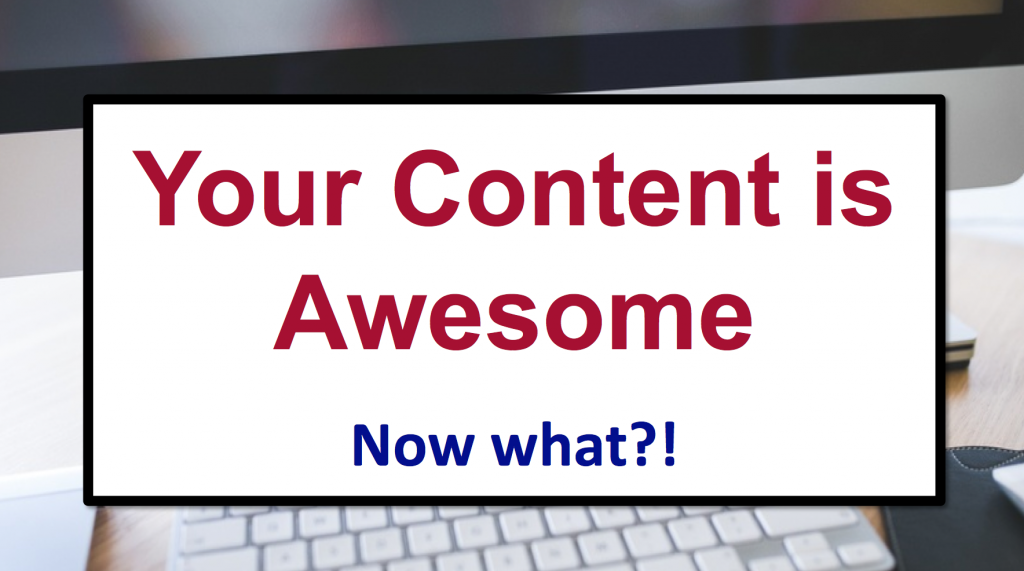
I had the opportunity to speak at the incredible Brighton Dome again this morning as part of BrightonSEO, a conference that has fast become a UK favourite in our industry.
My talk, “Your Content is Awesome – Now What,” was about content promotion. Here’s the deck and a summary of the talk.
Promotion is often still an afterthought
It’s a pretty good time to work in content marketing. Budgets are on the up and most companies are investing in content.
But anywhere that something becomes as heavily invested in as content marketing, you’ll find marketplaces getting busier and busier. And, as it stands today, competition for eyeballs on your content is at an all time high.
Yet in spite of this, and in spite of the fact that budgets for content marketing are increasing, promotion remains something of an afterthought in many cases.
In both agencies and within brands, we’ve seen examples of large budgets being ploughed into creating something innovative and “shiny,” with a very brief promotion plan of simply “doing a bit of outreach” at the end.
And it doesn’t cut it anymore.
Even great content can be so easily overlooked without the right promotion.
Outreach is not the same thing as promotion
Let me put this out there – outreach is not the same thing as promotion.
Outreach, the way I look at it, is the process of manually sourcing a target contact list, building relationships and contacting people with a view to getting them to notice your content and take your desired action.
That’s one promotion tactic. It’s a valid and a valuable one, granted. It still makes up a significant proportion of what we do to promote content.
But I would argue that if the only promotion you’re doing is outreach, then you’re not doing enough. There are two reasons I say that:
- It’s getting tougher all the time. We’re becoming accustomed to sending a message or email to a blogger and getting a response with a rate card. And while this doesn’t happen so much with journalists, anyone trying to reach influential bloggers will have, at some point, encountered this issue. Blogs are often run as businesses, so we have to expect it. But if you’re looking to scale placements of this nature, this trend is going to cause you a problem.
- The second reason is practical scale. If you need a team of people sourcing and writing up contact lists then manually calling, emailing or messaging, this is incredibly laborious and very difficult to scale longer term.
Key questions
At the outset of any content campaign, promotion should be in mind. Early on, you’ll need to ask yourself:
- What does success look like?
There are two layers to this. There’s the end goal – typically revenue led. And then here are the specific objectives for the given piece of content, which will in some way tie in. So, for example, you might be looking to acquire natural links to boost search visibility to generate relevant traffic and, therefore, sales and revenue. The big picture is the revenue and you need to have an eye on it. But you also need to be acutely aware of the specific metrics you’re measuring on this piece of content.
- Who is your audience?
If your content’s designed to make a new audience aware of you, or to generate direct or assisted conversions quickly, then your audience is most likely your end customer who you probably know inside out. But in some cases, your content audience is different to your end customer. Let’s say, for example, you’ve been tasked with enhancing certain social metrics because you’re competing with other sites that have better social visibility, reach and engagement. And let’s say you sell holidays to over 60s. In that case, your target audience is my Nan – but if you contacted her and asked her to share something on Facebook or Twitter, she’d have no idea what you were talking about. It’s an extreme example, of course, but highlights the importance of making sure your content audience and your content’s objectives are in tune.
Where’s your audience and who’s influencing them?
In order to identify the places we want our content to be seen, we need to identify our audience’s “digital hangouts,” and the publications they’re reading online.
Among the tools you can use to identify this information are:
With YouGov Profiles, you can type in a brand or an interest and get a host of demographic information about the people who like that thing. You can also get media information – things like the magazines and newspapers they read. This is, of course, valuable insight for those of us looking to get content in front of these people.
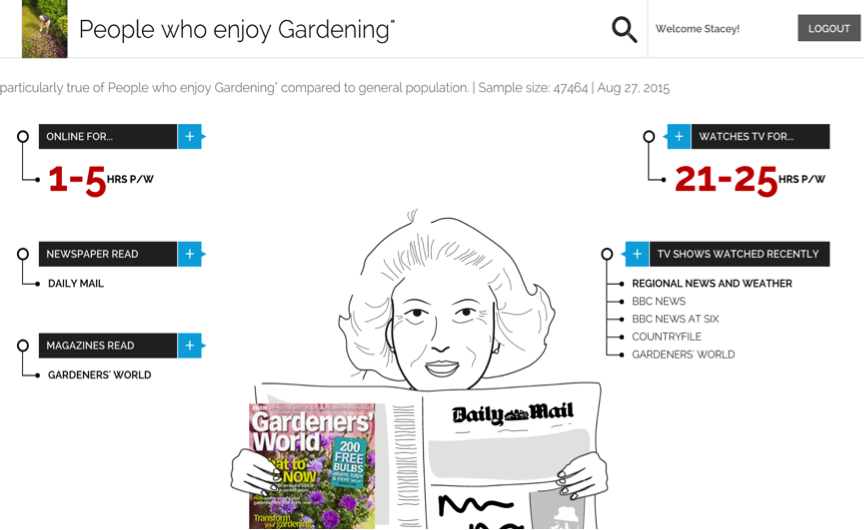
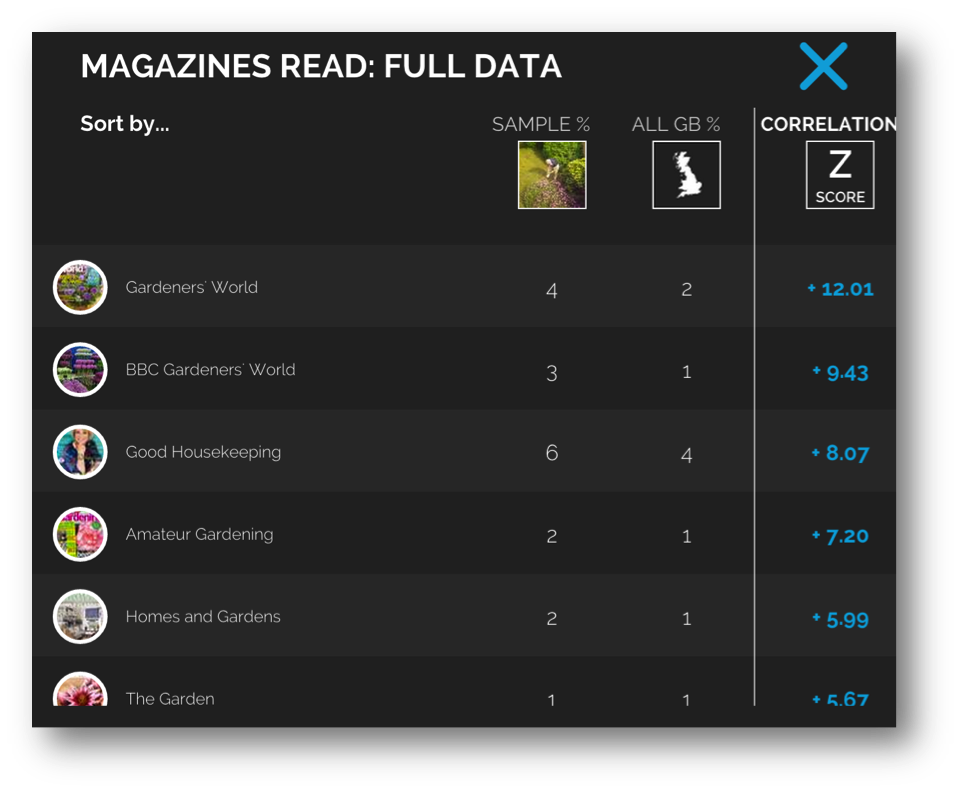
Facebook Audience Insights allows you to find out far more detailed information about a target audience. You can create a custom audience based on things like demographic data, brands they like, parental or relationship status and location. Then you can find out what else that audience likes – whether that’s brands, newspapers, magazines or the Facebook content-based communities they’re engaging with. Again, this is valuable data.
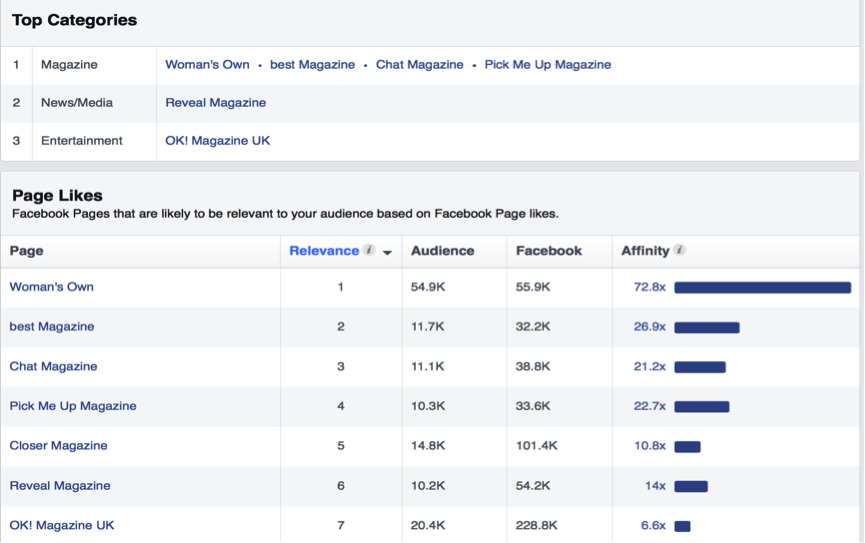
Google Display Planner is designed to sell you ad inventory on Google’s Display Network. But what it can also do is provide you with access to a list of sites based on a topic or keyword.
So, let’s say you want to reach people who like gardening, you can simply type that in, go to “placements,” and get a list of websites running Adsense where people go who are interested in gardening. You also get estimated impressions numbers, so you can start to build a picture of the audience size, etc.
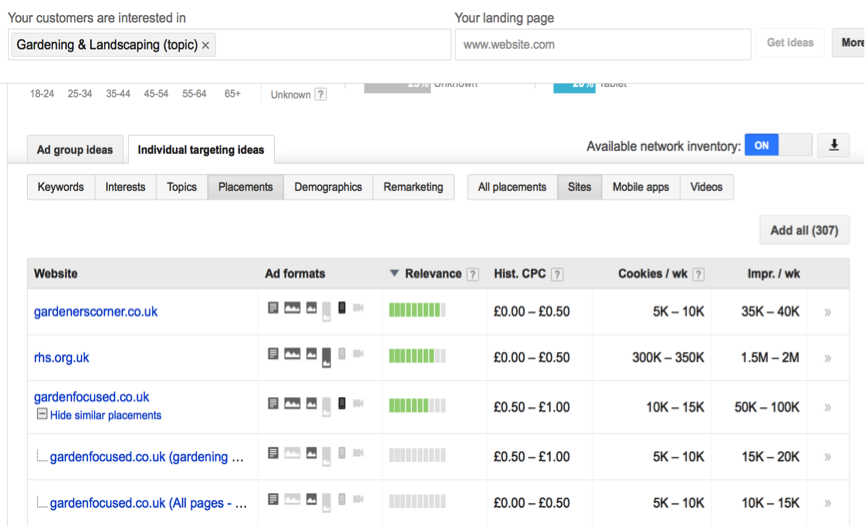
Contact finding and organising
A list of publications is a good start. But then identifying specific named contacts within them (or influencers that influence people within them) is another vital step.
For the record, I have no problem with contacting news desks if need be. They exist for a reason. But I have a preference for dealing directly with individuals. I use a ton of tools for finding contacts:
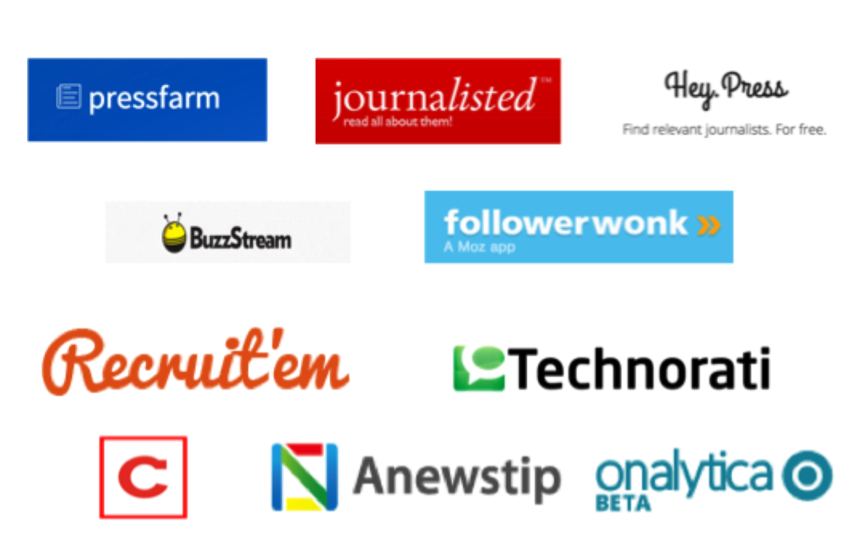
I have many of these tools listed in a Product Hunt collection.
A long list of contacts, of course, needs organising. And I’m a fan of a tiered approach. I typically organise contacts into three tiers. Of course the number and type of contacts in each tier will vary based on projects. But loosely:
- * Tier One contacts, for me, are people who, if only one or two of them shared the content or took action, it would represent success.
- * Tier Two contacts are typically those where it might take a handful to reach enough of an audience that it looks like a success.
- * Tier Three contacts are those who have a very relevant, but small, audience – and where it might realistically take scores for it to look like a success.
Getting early buy-in
Particularly with tier one contacts, I like to get buy-in early and contact them first. Certainly, your tier one contacts are worth getting in touch with early and sanity-checking your ideas with. Using some good old human psychology (do read this), you can get users bought in early (see slides 59-63). Getting feedback early has two benefits:
- * You can shape the content based on influencer feedback.
- * You’re more likely to have success with people you’ve consulted once the content is live.
Headlines and subject lines
How you describe your content is as important as how good your content is. Headlines can make or break content.
You can split test headlines incredibly cost effectively using Simitator and Google Consumer Surveys. Create “fake Tweet,” images based on what your headlines would be and then image based surveys. You can effectively then ask 500 people for their opinion on your headline for $50. Bargain.
Similarly, if you’re doing a lot of outreach, make sure you send emails through MailChimp or a similar system where you can measure the impact of various subject headers or times of day on open rates.
Tactics for scale
I’ve already said that I consider outreach simply to be one tactic (albeit it a valuable one) within the promotion side of SEO. Some others (there’s more detail in the deck) for scale include:
- * Paid press release distribution. Keep your tiered contacts separate and keep contact personal. But for scale, paid press release distribution (particularly through platforms like Cision) can be effective to supplement outreach efforts.
- * Anyone doing content marketing should be experimenting with paid content discovery platforms and paid social advertising.
- * PPC for content promotion. If you want traffic whose searches might be non-commercial in intent (e.g. statistics-based searches or guide/research-based searches) you’ll find that there are few (or even no) other people bidding. Adwords is still overwhelmingly direct-sale driven, which means there’s cheap traffic to be had for non-commercial keywords. You can drive this traffic (that’s very relevant and likely to take action) incredibly cost effectively.
- * On page SEO. Make sure your content is as visible for the relevant searches as a product or service is, and increase the chance of people continuing to find your content and take your desired action in the long-term.
Promoting content
Ultimately, content promotion should be as intelligently planned and thought out as product promotion. Multiple tactics with real strategy behind them, and measurable goals, are absolutely essential.
And, of course, a degree of trial and error!
—
Want to know even more?
Give your content marketing another boost by getting our four free digital marketing ebooks and our weekly content marketing newsletter.
You’ll immediately receive 123 pages of expert insight straight to your inbox.
Yes! Get My Four Free Ebooks Now…
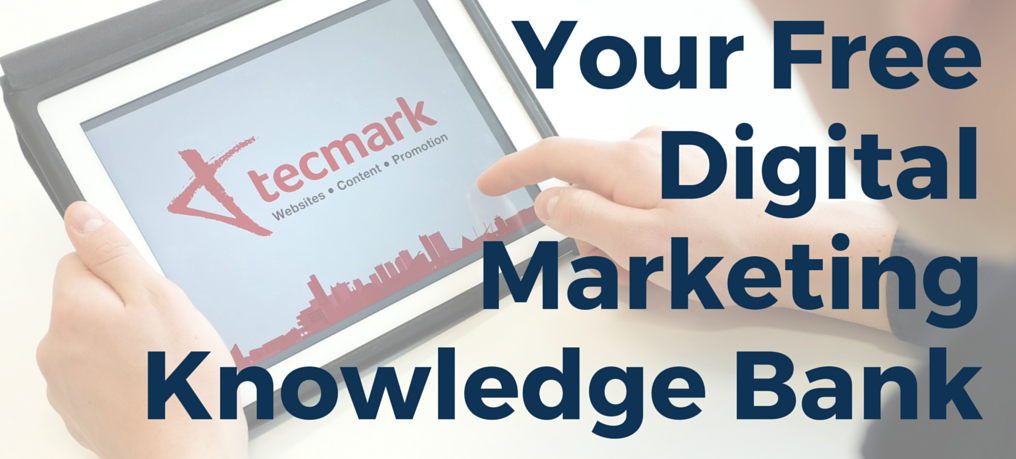
Get 123 pages of expert advice straight to your inbox.
-
Apps (46)
Content Marketing (67)
Digital PR (1)
Integrated Marketing (3)
Multi Screen (12)
News (99)
PPC (2)
Search (120)
Tecmark (70)
Uncategorized (2)

About the Author


